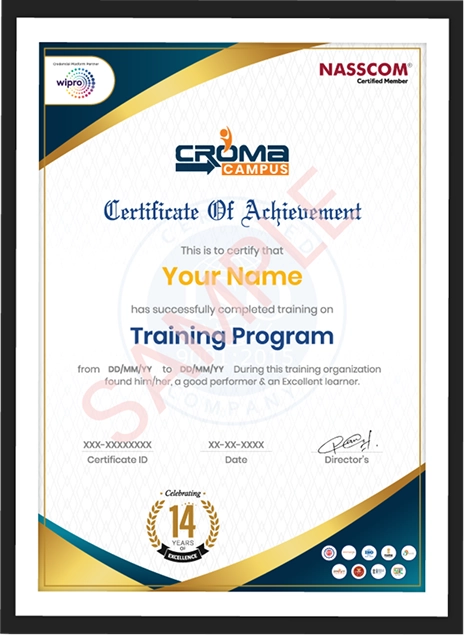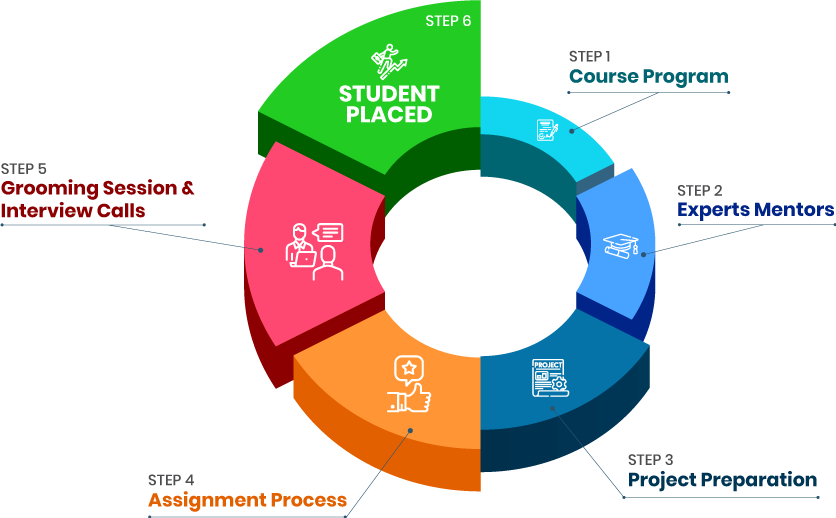Course Design By
Nasscom & Wipro
Choose from different cloud service providers like Azure, AWS, Google, etc.
By taking up our Cloud Computing Certification, you will understand cloud computing concepts and how to manage data.
Learn about practical concepts in the cloud and practice them as per the trends.
Stay relevant in the IT industry with the latest updates and certifications.
Learn the depth implementation of cloud computing and its various features.
Our Cloud Computing Certification will make you a certified professional who will be recognized worldwide.
We help you to become a part of the growing community in the cloud computing space.
You will get an opportunity to understand cloud computing fundamentals.
If you are working in the USA, you may earn around $105K to $140K.
In the UK, you may earn between Pounds 46,000 to 72,000.
For Australia, it is calculated between AUD 93,000 to 134,000.
In India, it is between 5 lacs to 13 lacs.
Well, the Cloud Computing Training will help you analyze important concepts like virtualization concepts, cloud techniques, etc.
Our AWS Cloud Computing Courses will help you learn cloud hosting services, their architecture, and more.
Get certified by leveraging cloud concepts within an organization.
Today, more than 40% of total industries have already adopted cloud platforms
You can manage all the job roles and responsibilities in the Cloud space with grace.
A fresher in Cloud Computing can get a salary of INR 5, 00,000 per annum.
To design, and deploy, highly available, or fault-tolerant cloud systems.
To select perfect cloud services to design and deploy apps.
To shift an existing business app to the cloud environment space.
To design scalable business apps as per enterprise standards.
To debug cloud apps and have extensive experience.
Some of the top hiring industries in cloud computing are Amazon, IBM, Google, Oracle, etc.
With a comprehensive Cloud Computing Course, you will know how to implement cloud techniques well.
Job roles include Cloud Administrator, Cloud Architect, Azure Cloud Systems Developer, etc.
Gain enough proficiency to become at the top of the cloud world.
Access to a multitude of job positions
In-depth Knowledge of the domain/field
Well-paid salary packages
Updated Knowledge base
we train you to get hired.

By registering here, I agree to Croma Campus Terms & Conditions and Privacy Policy
+ More Lessons
Course Design By

Nasscom & Wipro
Course Offered By

Croma Campus

Stories
success
inspiration


career upgrad


career upgrad


career upgrad


career upgrad
05-Jul-2025*
07-Jul-2025*
09-Jul-2025*
05-Jul-2025*
07-Jul-2025*
09-Jul-2025*

You will get certificate after
completion of program

You will get certificate after
completion of program

You will get certificate after
completion of program
in Collaboration with






Empowering Learning Through Real Experiences and Innovation

we train you to get hired.

Phone (For Voice Call):
+91-971 152 6942WhatsApp (For Call & Chat):
+91-971 152 6942Get a peek through the entire curriculum designed that ensures Placement Guidance
Course Design By


Course Offered By

Ready to streamline Your Process? Submit Your batch request today!
The expenditure of the government on the IT sector has improved significantly, which is leading to the emergence of new start-ups that require cloud computing professionals to manage their operations without any difficulty.
Our cloud computing course offers complete guidance and industry-recognized training for an equally competent market price.
Some the technologies like Python, Cassandra, Hive, Hadoop, Terraform, Docker, and many others are covered under cloud computing training.
Anyone from technical background can become a Cloud Computing professional.
Yes, post the completion of the course, you will surely be bestowed with a proper accreditation.

FOR QUERIES, FEEDBACK OR ASSISTANCE
Best of support with us
For Voice Call
+91-971 152 6942For Whatsapp Call & Chat
+91-9711526942